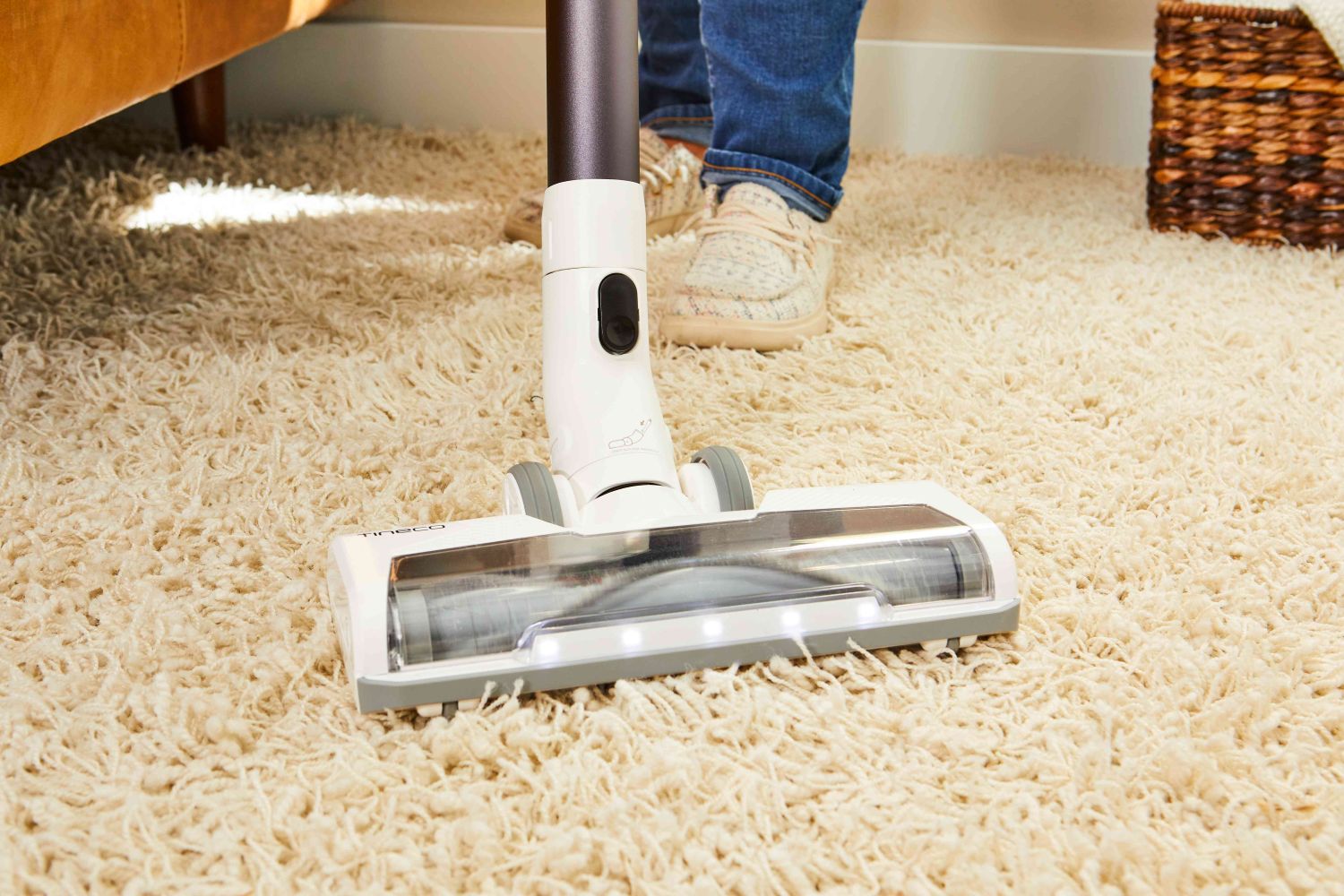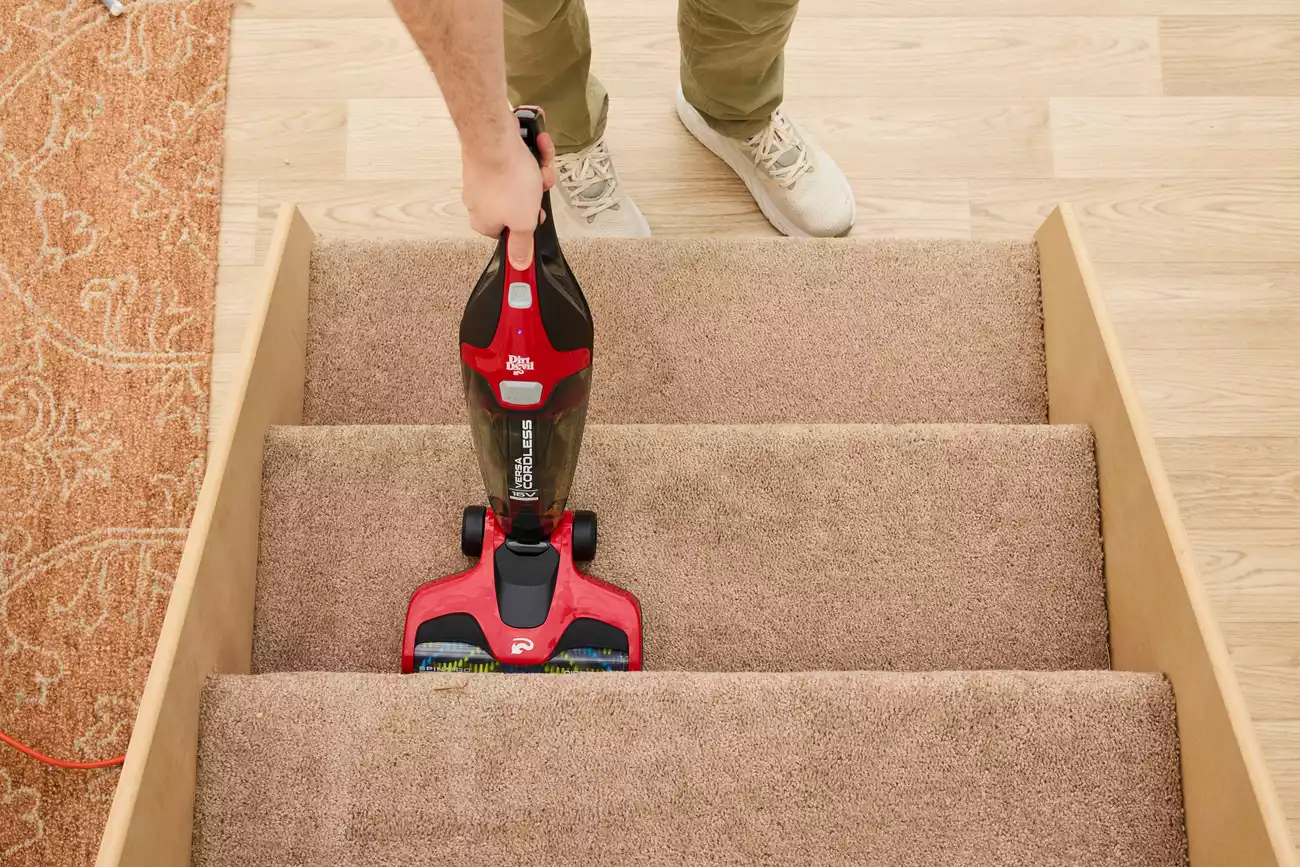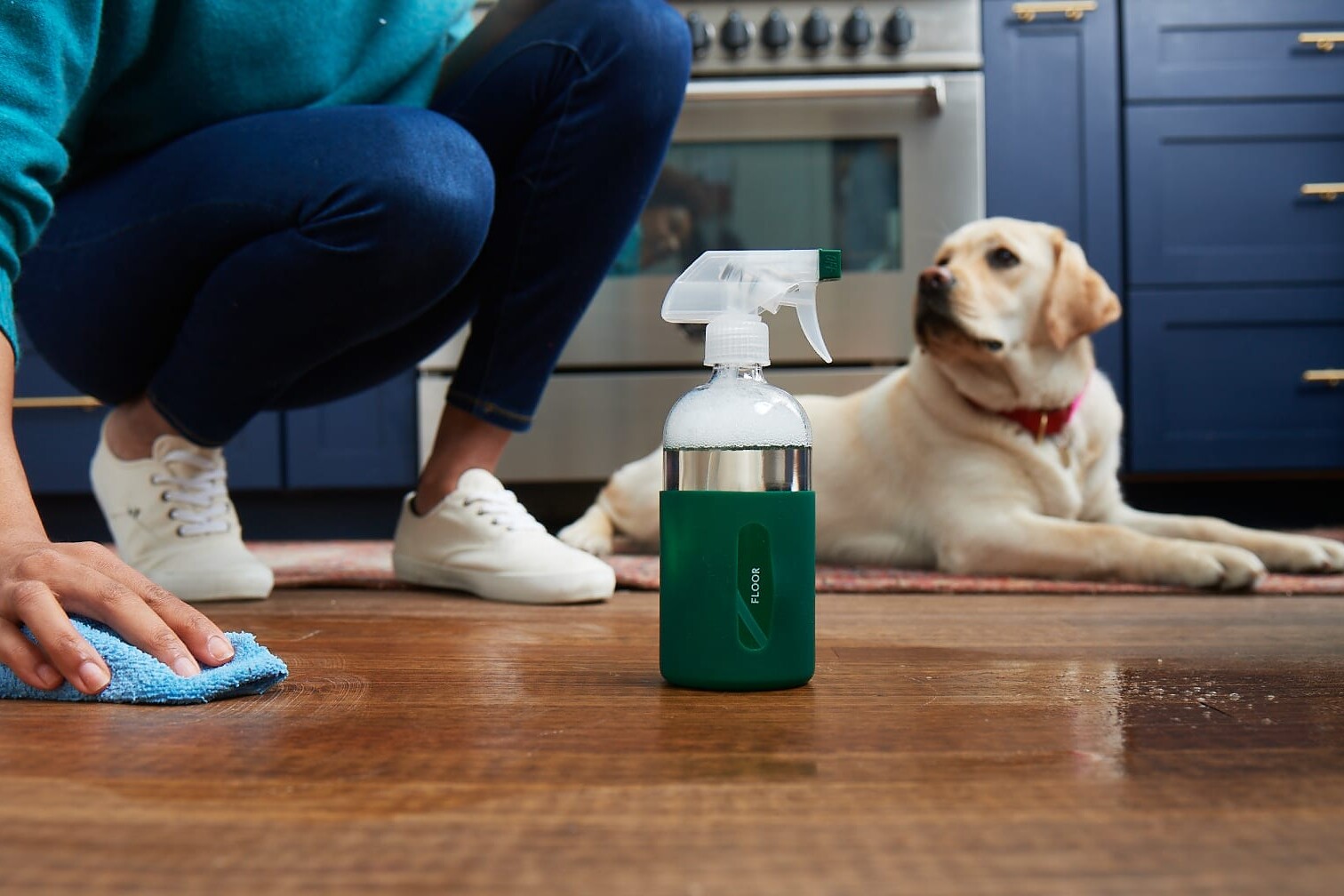You toss in a load of fresh laundry, expecting that clean, crisp scent… but instead? You’re hit with that unmistakable musty, sour, or even rotten egg odor the moment you open the washer door. It’s frustrating, isn’t it?
The very appliance designed to clean your clothes shouldn’t be making them smell worse — yet for millions of households, it does. And here’s the kicker: even newer, high-efficiency machines can start to stink within weeks if not properly maintained. It’s not just about dirty socks or mildew-prone towels — it’s the machine itself harboring grime, soap scum, trapped moisture, and even mold in hidden places.
But here’s the good news:
Fixing a smelly washing machine doesn’t require expensive service calls or harsh industrial cleaners. With just a few simple, fast-acting household solutions, you can eliminate odors within a day — and prevent them from coming back.
This guide is built from real-world experience and what’s actually worked for everyday families — no fluff, no gimmicks, and no confusing jargon. Whether you have a front-loader that constantly smells damp, or a top-loader with funky buildup, these quick fixes will get you back to fresh, clean laundry without the stink.
Let’s dive into the 8 most effective fixes — including natural cleaners, must-do maintenance, and the secret places smells hide (hint: it’s not always the drum!).
Fix #1: Clean the Rubber Gasket (Front-Loaders’ #1 Smell Source)
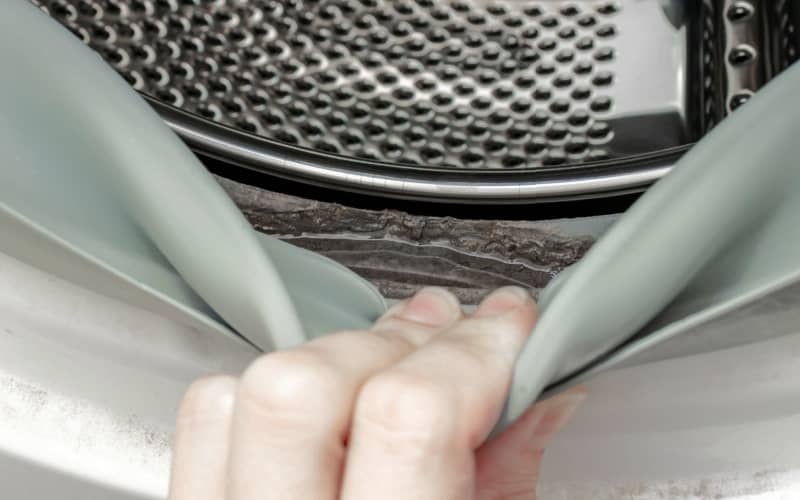
If you have a front-load washing machine, this should be your first stop. That thick rubber seal around the door — also called the gasket — is a magnet for mildew, hair, detergent scum, and even socks that go missing.
How to Fix It:
- Wear gloves and pull back the rubber flap carefully.
- Wipe inside with a paper towel — you’ll likely find black grime or gray sludge.
- Spray a mix of white vinegar + a few drops of tea tree oil (or a store-bought cleaner).
- Scrub with an old toothbrush or cloth, especially in the folds.
- Leave the door open to dry fully after cleaning.
Tip:
Add this step to your weekly laundry routine — it takes 2 minutes and prevents buildup.
Why It Works:
- Vinegar kills mold and bacteria
- Tea tree oil prevents regrowth
- You physically remove residue that causes the stink
Fix #2: Run a Hot Cycle With Baking Soda & Vinegar
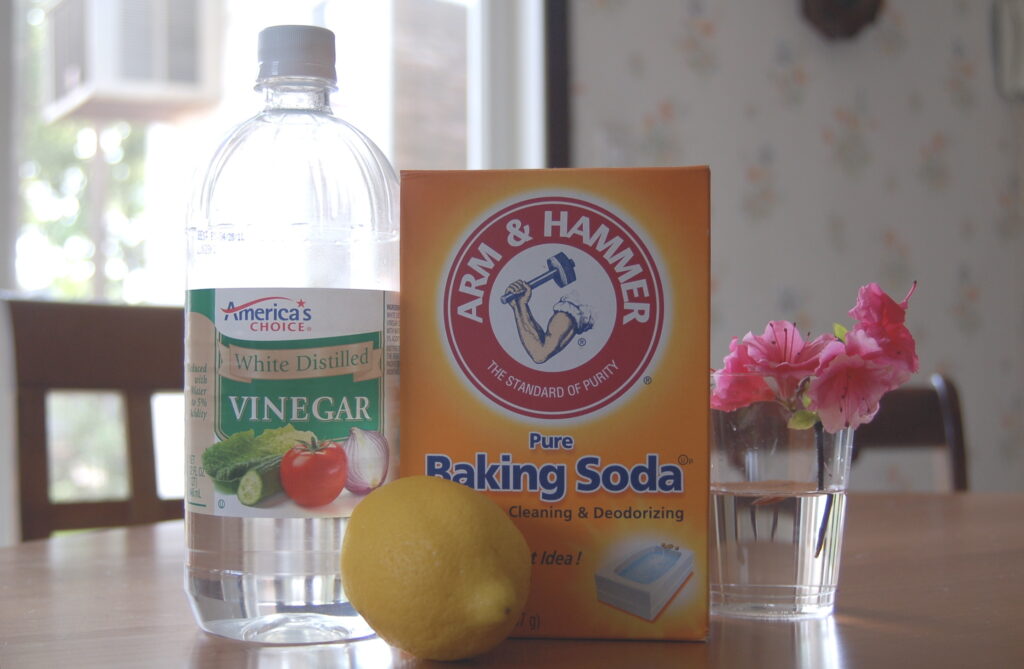
One of the simplest — yet most powerful — ways to deep-clean your washer drum is with basic kitchen staples: baking soda and white vinegar. This combo works wonders on both front and top-load machines.
What to Do:
- Add ½ cup of baking soda directly into the drum.
- Pour 2 cups of white vinegar into the detergent dispenser.
- Run a hot wash cycle (or a tub clean cycle if your washer has it).
- Leave the lid/door open when done.
Important:
Don’t mix baking soda and vinegar in the same container — they neutralize each other. Let them work separately inside the machine.
Why It Works:
- Baking soda neutralizes odors
- Vinegar dissolves mineral deposits and softener gunk
- Hot water kills bacteria and mildew
Both of these fixes are safe, affordable, and can be done without any special tools. Together, they often remove 90% of odors in just one day.
Fix #3: Clean the Detergent Drawer and Dispenser Tray
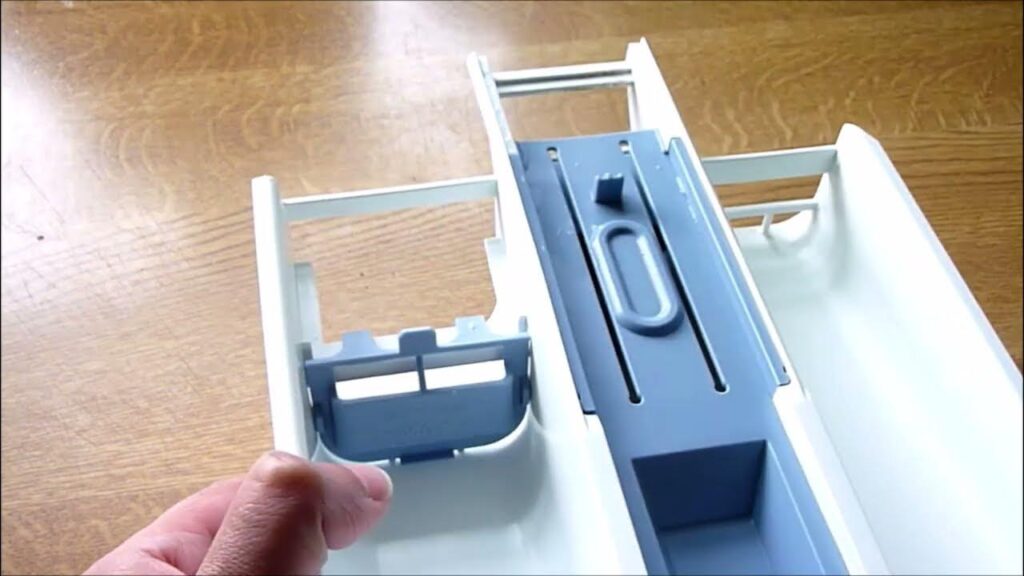
You’d be surprised how often the source of washing machine odor is hiding in plain sight — right in the detergent or fabric softener tray. These compartments are damp, dark, and rarely cleaned… a perfect breeding ground for mold, mildew, and gunk.
What to Do:
- Remove the drawer (most pull right out with a little upward pressure).
- Soak it in hot water + dish soap for 10–15 minutes.
- Use a toothbrush or sponge to scrub off any black slime, sticky residue, or hardened detergent.
- Clean the slot where the drawer slides in — use a vinegar spray or cotton swab.
- Let everything dry completely before reinserting.
Tip:
If you see pink or orange slime, that’s likely Serratia marcescens, a type of bacteria — and a sign you need to clean more often.
Why It Works:
- You eliminate trapped detergent and softener buildup
- Prevents mold spores from reentering the drum during wash cycles
- Keeps your laundry smelling cleaner
Fix #4: Scrub the Drain Filter (Often Forgotten)
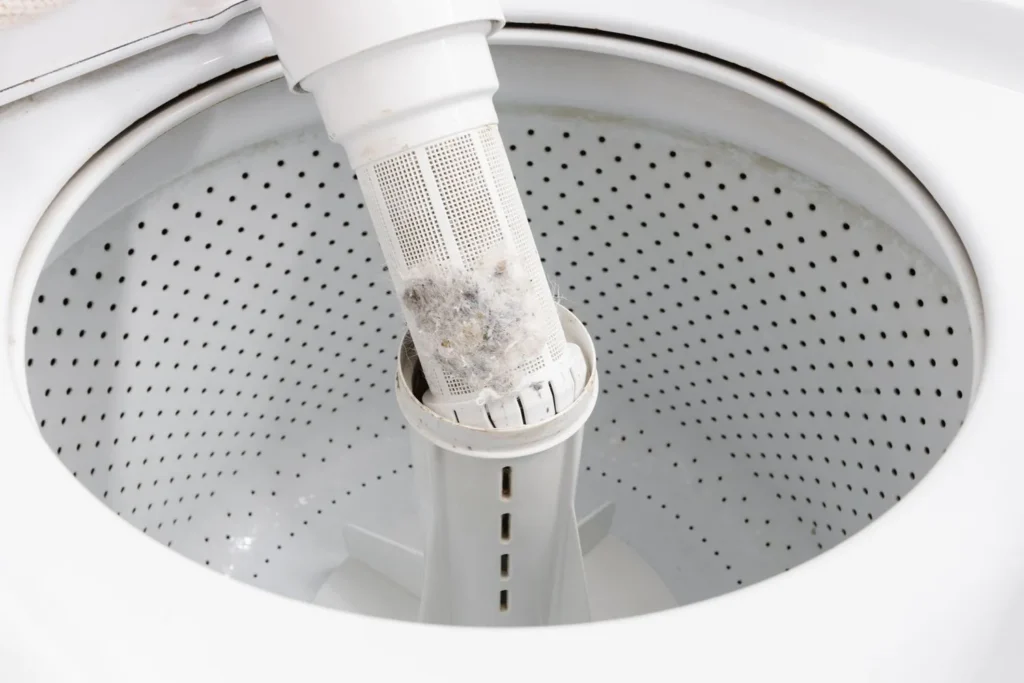
Many front-loaders (and some top-loaders) have a drain pump filter near the bottom front panel. Over time, this collects lint, coins, hair, pet fur, and even tiny socks — and when clogged, it can start to rot and stink.
What to Do:
- Look near the bottom of your washer (behind a small panel or flap).
- Place a towel and shallow tray underneath — water will spill out.
- Unscrew the filter cap carefully and drain any water.
- Remove the filter and scrub it clean with hot soapy water.
- Wipe inside the housing before reinstalling.
Tip:
Clean this every 2–3 months. It takes 10 minutes and can prevent major drainage issues.
Why It Works:
- Removes hair, buildup, and smelly gunk
- Helps your washer drain faster
- Reduces stress on the pump — extending your machine’s life
Fix #5: Leave the Door (or Lid) Open After Every Wash
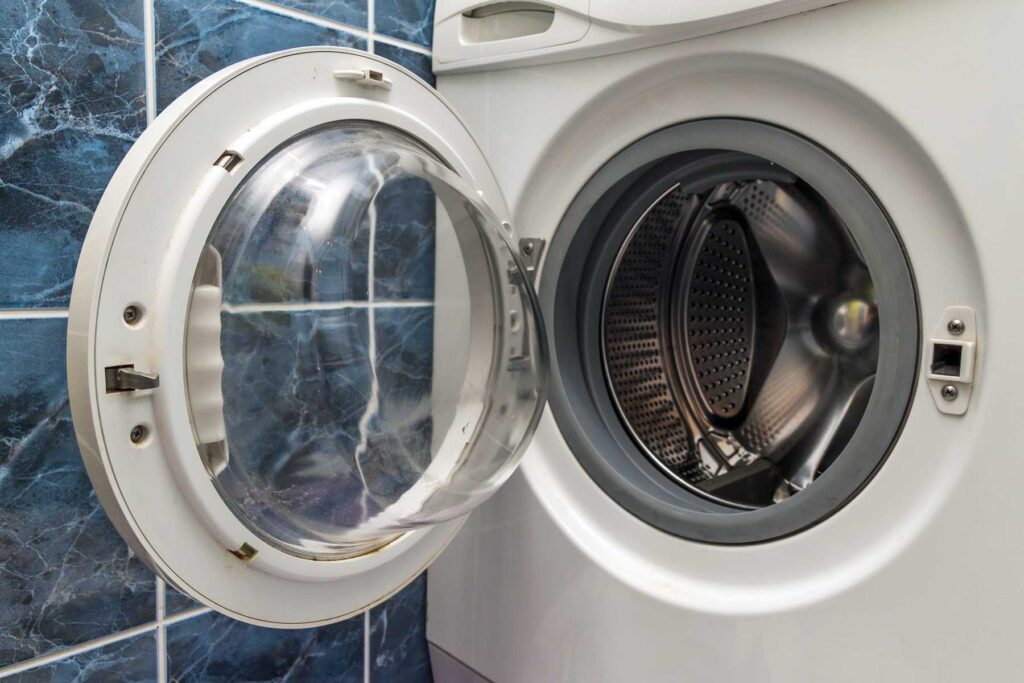
This may seem too simple to matter — but it’s one of the most important long-term odor fixes. A closed washing machine traps moisture, especially in front-loaders. That humid environment is perfect for mold and bacteria to thrive in.
What to Do:
- After every load, leave the door or lid open for several hours (or overnight).
- If you have a front-loader with pets or kids, wedge it open with a towel or magnetic door prop.
- Also, remove clothes immediately after the cycle ends — don’t let them sit damp inside.
Tip:
For top-loaders, leave the lid fully up — the open design helps dry out the drum and agitator naturally.
Why It Works:
- Airflow dries out interior moisture
- Prevents mold and mildew from growing on drum walls, seals, and dispensers
- Works as a natural, no-effort preventative habit
Fix #6: Use Less Detergent — And the Right Kind
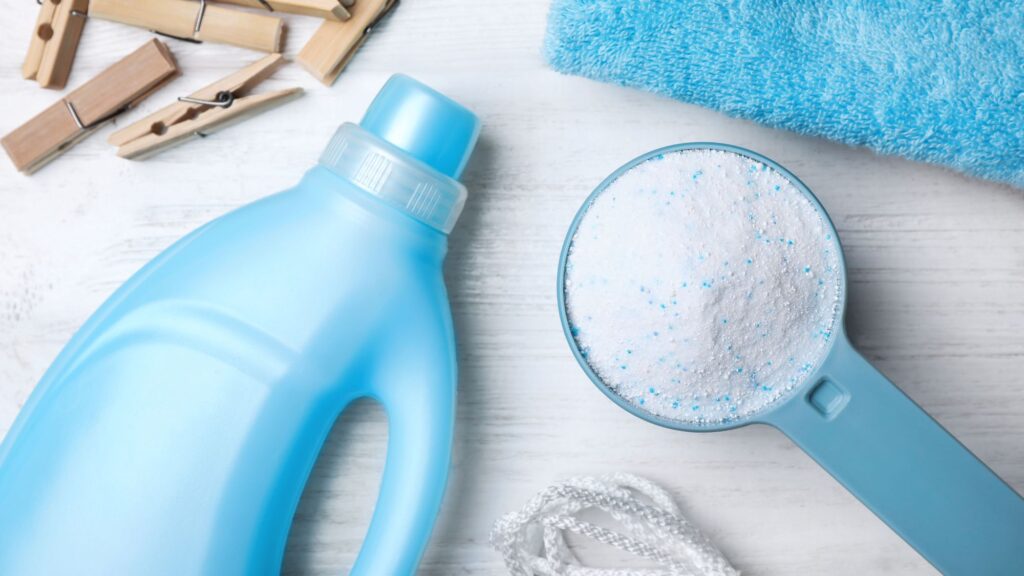
Using too much detergent or the wrong type is a top cause of washer smells. Especially with high-efficiency (HE) machines, excess soap doesn’t rinse clean — it builds up inside the drum and hoses, turning into sticky, smelly residue.
What to Do:
- Use HE detergent in HE machines — regular soap will cause over-foaming and buildup.
- Follow the measuring lines — most loads need only 1–2 tablespoons, not a full cap!
- For pre-measured pods, cut back to 1 per load unless washing heavily soiled items.
Tip:
Run a monthly hot cycle with no laundry or detergent — this flushes out hidden buildup.
Why It Works:
- Reduces sticky film that traps bacteria and dirt
- Helps water rinse everything cleanly
- Prevents that “sour sock” smell in clothes after washing
Fix #7: Try a Commercial Washing Machine Cleaner (Monthly Use)
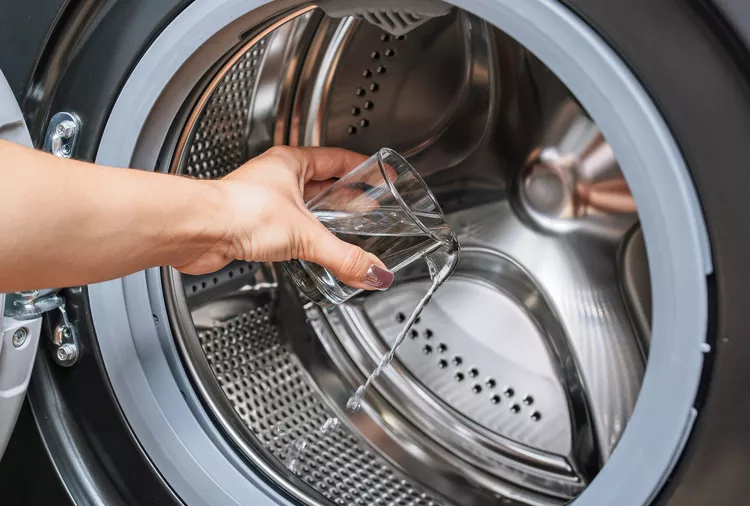
Sometimes, your washer just needs a deeper detox — especially if it hasn’t been cleaned in months (or ever). That’s where washing machine cleaning tablets or powders come in. They’re specially designed to break down internal grime, detergent residue, hard water minerals, and odor-causing bacteria in areas you can’t reach — like inner drums, pipes, and hoses.
What to Do:
- Drop one cleaning tablet (like Affresh, Tide Washing Machine Cleaner, or Eco-Gals) directly into the drum.
- Run the hottest, longest cycle available — usually the “Tub Clean” or “Sanitize” setting.
- Wipe out the drum when finished, and leave the door open to dry.
Tip:
Use these once a month to prevent future smells. They’re especially useful in hard water areas.
Why It Works:
- Targets mold, mildew, and biofilm buildup deep inside machine plumbing
- Works better than home remedies alone in neglected machines
- Easy “set-it-and-forget-it” routine
Fix #8: Replace the Door Seal or Hose (If Smells Keep Coming Back)
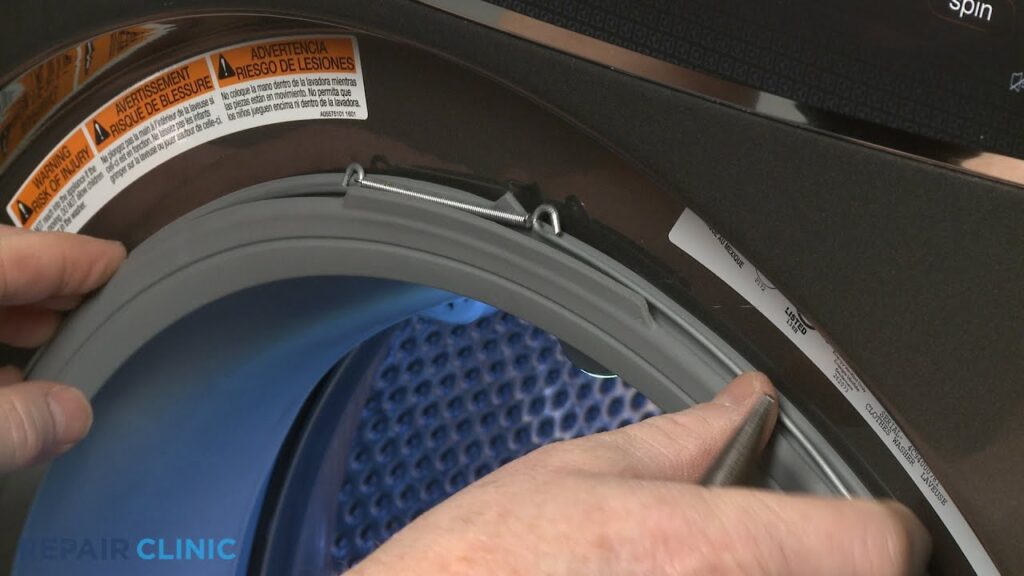
If you’ve tried all the cleaning tricks and your machine still smells musty or rotten, the problem might be deeper — literally. Over time, rubber seals, internal hoses, or even drain pipes can become permanently contaminated with mold or bacteria, especially if water has sat stagnant for long periods.
What to Do:
- Inspect the door seal for black spots or cracks — if it’s mold-stained or brittle, replace it.
- Smell the drain hose — if it smells like sewage or mildew, it may need replacement.
- Call a technician if you’re not comfortable removing parts yourself — it’s a 15-minute fix with the right help.
Tip:
This step is rare but necessary for older machines or washers in humid environments with recurring odor problems.
Why It Works:
- Removes permanently contaminated components
- Restores a fresh-smelling baseline
- Gives your washer a “second life” if other methods have failed
Washing Machine Odor Solutions Comparison Table
| Fix | Best For | Machine Type | Cost | How Often | Effort Level | Effectiveness |
| Cleaning the Rubber Gasket | Moldy smells, mildew, black gunk | Front-load only | Low (DIY) | Weekly or bi-weekly | Medium | ⭐⭐⭐⭐☆ |
| Baking Soda + Vinegar Hot Cycle | General odor, scum, softener buildup | All types | Very low | Monthly | Low | ⭐⭐⭐⭐⭐ |
| Detergent Drawer Cleaning | Sour smells, soap scum | All types | None | Monthly | Medium | ⭐⭐⭐⭐☆ |
| Drain Filter Scrub | Rotting smells, pet hair, clogs | Front-load (mostly) | None | Every 2–3 months | Medium-High | ⭐⭐⭐⭐☆ |
| Leaving Door Open | Prevention, moisture control | All types | Free | After every use | None | ⭐⭐⭐⭐☆ |
| Using Less/Correct Detergent | Preventing sour smells | HE machines especially | Very low | Every wash | None | ⭐⭐⭐⭐☆ |
| Commercial Cleaner Tablets | Deep-clean, neglected machines | All types | $5–$10/month | Monthly | Very low | ⭐⭐⭐⭐⭐ |
| Replacing Seals or Hoses | Persistent, deep mildew | Mostly front-load | Medium–High | Rare (if needed) | High | ⭐⭐⭐⭐⭐ |
Product Suggestions Table
These are trusted, non-affiliate cleaning products frequently recommended by experts and real users for tackling washing machine odors.
| Product Name | Type | Best Use Case | Price Range | Notes |
| Affresh Washing Machine Cleaner | Tablet | Deep internal cleaning | $9–$12 (6 tabs) | Works on both front/top-loaders, HE safe |
| Tide Washing Machine Cleaner | Powder | Heavy detergent buildup, strong odors | $12–$15 (5 pk) | Slightly stronger scent than others |
| Eco-Gals Eco Swirlz | Tablet (eco-friendly) | Natural option for monthly maintenance | $10–$14 (6 tabs) | Biodegradable, subtle citrus scent |
| Clorox Washing Machine Cleaner | Liquid w/ bleach | Mold, mildew, and bacteria-heavy smells | $6–$9 | Powerful, but not for frequent use |
| RMR Mold & Mildew Cleaner | Spray | Rubber gaskets, drawer tracks, seals | $14–$18 | Strong spray, fast-acting foam on black mold |
| White Distilled Vinegar | Liquid (natural) | Detergent scum, mineral deposits | $2–$4/gallon | Great paired with baking soda, safe for most uses |
| Arm & Hammer Baking Soda | Powder | Drum deodorizing, pre-cleaning cycles | $1–$3/lb | Odor-neutralizer, always useful to keep stocked |
| Tea Tree Essential Oil | Natural oil | Anti-fungal add-on to vinegar or water mix | $6–$10 (small) | Powerful mold fighter; just a few drops per use |
| Microfiber Cleaning Cloths | Reusable cloth | For drying seals, wiping drawers/hoses | $8–$12 (10-pack) | Washable, reusable, prevents bacteria transfer |
| Old Toothbrush / Cleaning Brush | Manual tool | Tight spots: drawer corners, seals, filters | Free–$5 | Scrubbing must-have for grime removal |
Buying Guide: Choosing the Right Washing Machine Cleaner (and Method)
If you’re staring at 15 different cleaning products in a store or on Amazon and thinking, “Which one do I actually need?”, you’re not alone. Here’s how to match your cleaning choice with your problem type, washer model, and lifestyle — so you don’t waste time or money.
1. Match Cleaner to Washer Type
- Front-loaders: Look for products that specifically mention mold/mildew removal. Tablets like Affresh or sprays like RMR are most effective.
- Top-loaders: Generally easier to clean — powder options like Tide Washing Machine Cleaner or even vinegar+baking soda can work wonders.
- HE machines: Use only HE-safe products. Too much foam causes buildup. Stick to labeled tablets or mild natural cleaners.
2. For Quick Odor Removal
If your washer smells right now and you want it fixed tonight:
- Run a hot vinegar + baking soda cycle
- Then spray and wipe the rubber gasket and detergent drawer using a disinfecting cleaner.
- Let the machine dry fully with the door open.
3. For Monthly Maintenance
Want to keep your machine fresh long term? Use:
- 1 tablet of Affresh, Tide, or Eco-Gals monthly (no laundry inside).
- Wipe down seals and drawers weekly.
- Leave the door/lid open after every wash.
This takes 15 minutes a month and saves you from big problems later.
4. For Deep Mold or Mildew
- If you see black spots or smell strong mildew, use a bleach-based cleaner like Clorox Washing Machine Cleaner or RMR Mold Spray on the gasket and inside rubber folds.
- Scrub well, run a hot empty cycle, and repeat weekly for a month.
Caution: Don’t mix bleach and vinegar — ever. Use them in separate cleanings.
5. Prefer Natural Solutions?
If you’re sensitive to chemicals or have pets/kids:
- Stick with baking soda, vinegar, and tea tree oil.
- Use eco-friendly tablets like Eco-Gals.
- Make your own spray: 1 cup vinegar + 10 drops tea tree oil + 1 cup warm water.
Quick Tip:
“If it smells like mildew, it needs vinegar. If it smells like sewage, check the filter. If it smells like socks, clean the drawer.”
FAQs: Smelly Washing Machine Woes, Solved
1. Why does my washing machine smell like mildew or mold?
Mildew smells usually come from trapped moisture in the rubber door seal, detergent drawer, or drum. If you’re not cleaning the gasket, drawer, or leaving the door open after washes, mold will grow — even in new machines.
2. Can I use vinegar and baking soda together in the washer?
Yes, but use them separately for best results. Add baking soda to the drum and vinegar to the detergent tray before running a hot cycle. Mixing them directly outside the washer causes them to fizz and cancel each other out.
3. How often should I clean my washing machine?
At minimum, do a deep clean once a month using cleaner tablets or vinegar. For best results:
- Wipe seals and drawers weekly
- Run hot water flush cycles monthly
- Clean the drain filter every 2–3 months
4. Why do my clothes still smell bad after washing?
If your washer is smelly, it transfers odors to your laundry. But it could also be:
- Too much detergent
- Not enough water flow (clogged filter)
- Leaving damp clothes in too long
Start by cleaning the machine and removing clothes right after the wash ends.
5. Can mold inside the washing machine make me sick?
In rare cases, yes — especially if you have asthma, allergies, or respiratory issues. Mold spores can circulate through laundry and irritate skin or lungs. That’s why regular cleaning isn’t just about smell — it’s about hygiene.
6. Are commercial washer cleaners better than natural ones?
They’re more convenient and sometimes more effective if your washer hasn’t been cleaned in a long time. But baking soda, vinegar, and essential oils can still do an excellent job if used regularly.
7. What’s the best way to prevent the smell from coming back?
- Leave the door/lid open after every wash
- Use the right amount of detergent
- Clean the gasket, drawer, and drum monthly
- Do regular “empty hot cycles” to rinse hidden gunk
Wipe everything dry at least once a week

